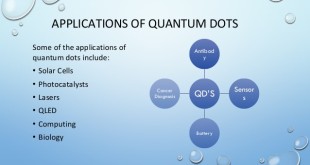Introduction: In the realm of defense, warfare, and explosive applications, the field of energetic materials and munitions technologies continues to push the boundaries of innovation. These technologies, ranging from explosives to propellants and pyrotechnics, play a crucial role in various industries, including defense, aerospace, mining, and entertainment. In this blog …
Read More »Unleashing the Power of Nanosensors: Transforming Healthcare, Electronics, Manufacturing, Aerospace, and Defense
Introduction: In the vast realm of nanotechnology, nanosensors are emerging as a powerful tool with the potential to revolutionize various industries. These miniature sensors, often smaller than a human hair, are poised to transform healthcare, electronics, manufacturing, aerospace, and defense sectors. By enabling precise and real-time monitoring of critical parameters, …
Read More »Swarm of nanorobots kill cancer cells, deliver drugs to target tissues, and improve vaccines
We are on the verge of new transitions that will transform robotics. One is already underway—the miniaturization of robots, to the point where invisible, microscopic robots could be around us and inside us, performing monitoring or even life-saving functions. We have seen systematic bio-inspired efforts to create microbe-like, microscopic robots. …
Read More »DARPA AMBIIENT developing ultrasensitive Magnetometers
State-of-the-art magnetometers are used for diverse civilian and DoD applications, among them biomedical imaging, navigation, and detecting unexploded ordnance and underwater and underground anomalies. Each beat of your heart or burst of brain activity relies on tiny electrophysiological currents that generate minuscule ripples in the surrounding magnetic field. These …
Read More »Smart Microrobots can self-reconfigure, merge, split, and heal themselves
We are on the verge of new transitions that will transform robotics. One is already underway—the miniaturization of robots, to the point where invisible, microscopic robots could be around us and inside us, performing monitoring or even life-saving functions. We have seen systematic bio-inspired efforts to create microbe-like, microscopic robots. …
Read More »Twisted Graphene for Quantum technology
Graphene is a 1-atom-thick layer of tightly bonded carbon atoms arranged in a hexagonal lattice. Graphene the world’s first 2D nanomaterial, is widely regarded as the “wonder material” of the 21st century due to the combination of its extraordinary properties. As a single layer of graphite, it is the thinnest …
Read More »Compound semiconductors for 5G, radar, electronic warfare, aviation, and satellite communication applications
Modern electronic products, from computers to smart phones, use silicon chips at their heart. As the name suggests, these chips are made from silicon, which is a highly abundant element found in sand. With a single element, it is possible to scale-up the manufacturing process to make highly complex silicon chips …
Read More »Micro- and Nanoelectronics for Quantum Technologies
Current silicon technology has steadily improved our ability to compute by increasing the number of bits and gates. Now researchers are developing Quantum technology to develop the next generation of computer communication, control, signal processing, and sensors. Quantum technology (QT) applies quantum mechanical properties such as quantum entanglement, quantum …
Read More »Smart, Multifunctional and Programmable materials require noval fabrication and 3D printing technologies
Smart materials or Active materials or Functional materials are designed materials that have diverse, dynamic features that enable them to adapt to the environment. They have one or more properties that can be significantly changed in a controlled fashion by external stimuli, the stimulus and response may be mechanical, electrical, …
Read More »Quantum dots, the semiconducting nanocrystals enable efficient & cheaper displays, solar cells, and infrared cameras
Driven by technology advances in solid-state optoelectronics, light-emitting diode (LED) lighting has been expanded to a wide range of applications in consumer electronics, automotive, architectural, and healthcare settings. Recently, there has been a drive to make lighting “smart” by incorporating internet of things (IoT) connectivity and machine learning-based artificial intelligence …
Read More » International Defense Security & Technology Your trusted Source for News, Research and Analysis
International Defense Security & Technology Your trusted Source for News, Research and Analysis




